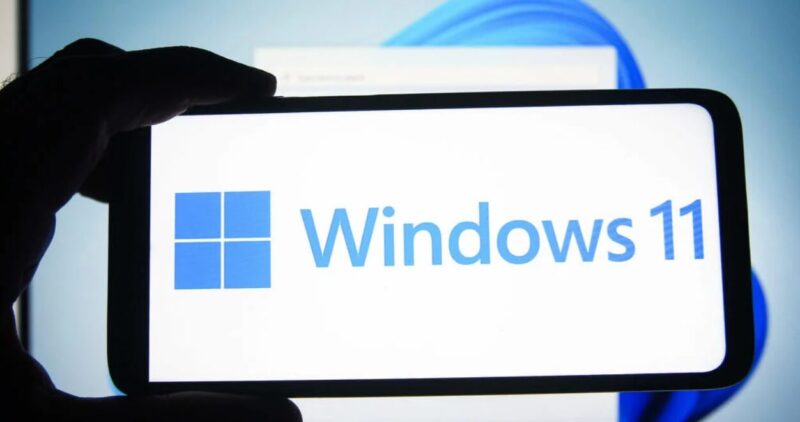When Home windows 10 was released in 2015, Microsoft stated that it would be the final major release with a distinct model number, since Home windows will evolve into a service with regular incremental upgrades. By 2021, Microsoft’s goals for Windows and its ecosystem had shifted significantly. Home windows 11 was announced in June 2021, and now the formal launch has arrived. Let’s take a look at everything Windows 11 has to offer.
We enjoy Windows 11 for a variety of reasons.
A much-needed re-paint . While appearances are not everything, they contribute significantly to the feeling that Windows 11 is a significant release. Microsoft’s new operating system delivers Windows a new look that is more colourful, cleaner, and easier to operate, while remaining familiar enough for Windows 10 veterans to hop right in without much relearning.
The most visible change is the widely-discussed redesigned Taskbar, which now occupies the middle of the screen and features a much more simple and beautiful design reminiscent of Macs and Chromebooks. However, while the Taskbar’s appearance has been improved, its functionality has remained mostly unchanged.
Tapping the Windows key brings up the redesigned Start menu, which features huge app icons and even makes app recommendations based on what you’ve just downloaded. We’re not completely sure why the Taskbar contains both the Start and Search icons, as both perform very similarly when it comes to locating recently used apps and files. However, that minor redundancy aside, Windows 11’s primary appearance and feel is just cleaner and more enjoyable to use. However, what truly makes Windows 11 a visual treat are the stunning new themes. The software comes preloaded with six predefined themes that offer a variety of vivid colours, gorgeous background artwork, and light and dark settings for customising your PC.
We’re particularly fond of the Glow theme, which bathes our screen in a deep purple hue when dark mode is activated, although the default Windows 11 theme’s blossoming blues are also quite attractive. If you’re not a fan of the default themes, you can still modify anything from your desktop background to your accent colours — and even combine bright and dark modes for different programmes. There are some little visual enhancements that we love as well, such as the fact that the default folders for Music, Videos, and Pictures are not all monotonous manilla icons. Combine it with tiny touches like an Apple-inspired control panel for fast modifying Wi-Fi and Bluetooth settings, and you’ve got a look that doesn’t exactly redefine Windows, but certainly makes it more aesthetically pleasing.
Who is eligible to receive Windows 11?
To be honest, the list of compatible PCs is a little shorter than I anticipated. A 64-bit processor, 4GB of RAM, 64GB of storage, UEFI secure boot, and TPM (trusted platform module) 2.0 are required as minimum requirements. That last one can be problematic for some users, particularly on less expensive laptops. If your CPU is older than the seventh-generation Intel Core series (we’re currently up to the 11th-generation), you may be in trouble. To do a check, download and run the Microsoft PC Health Check app. There are solutions available for installing Windows 11, but use them at your own peril.
Windows 11 Review: Is It Worth It?
Microsoft’s rigorous hardware requirements have reduced the number of devices that can officially run the current version of Windows. While the majority of new laptops will support Windows 11, you’re definitely out of luck if you build your own desktop PC or are still using something older than four years. With that said, there is no reason not to upgrade if your device supports Windows 11.
While it is not a significant upgrade over Windows 10 in terms of functionality, it does provide a new appearance and feel. Microsoft has placed a higher premium on the user experience and made a few minor tweaks here and there. Multitasking on Windows has been significantly easier as a result of the new Snap Assist and Snap Groups. However, Microsoft has yet to implement several key features touted during the launch event, including support for native Android apps via the Amazon Appstore. Microsoft has also removed fundamental features such as the ability to drag and drop files into taskbar-pinned programmes. Additionally, vestiges of Windows 10 and even earlier versions can be detected.
In general, if you’re already familiar with Windows 10, this new upgrade should not include anything odd or unexpected. As I previously stated, the upgrade is more about design than it is about functionality. If you’re on the fence about Windows 11, I’d recommend waiting, as you won’t miss out on much. Once Windows 11 is installed, you can revert to Windows 10 by heading to the Start menu > Settings > Windows Update > Advanced options > Recovery and selecting the ‘Go Back’ option. Bear in mind that this will only be available for ten days following the upgrade, as Windows will then destroy all rollback files to conserve space.
Pros:
- A new and beautiful user interface
- Snap Layouts and Snap Groups are quite convenient.
Cons:
- There is currently no support for native Android applications.
- Certain common keyboard shortcuts and customising options are no longer functional.
- Modern hardware is required.



